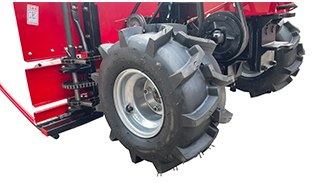Dec . 04, 2024 21:19 Back to list
brake drum actuator
Understanding Brake Drum Actuators Mechanisms, Functions, and Importance
The brake system is an integral part of any vehicle, ensuring safety and control during operation. Among its various components, the brake drum actuator plays a critical role in the efficient functioning of drum brakes. This device is responsible for converting hydraulic pressure into mechanical force, enabling the brake shoes to make contact with the drum and thereby slowing down or stopping the vehicle. In this article, we will delve deeper into the mechanisms, functionalities, and significance of brake drum actuators.
Mechanism of Brake Drum Actuators
A brake drum actuator typically consists of several key components the housing, push rod, spring, and a hydraulic chamber. When the driver presses the brake pedal, hydraulic fluid from the master cylinder is transmitted to the brake actuator. This pressurized fluid enters the hydraulic chamber within the actuator, pushing the piston forward. The movement of the piston translates into the linear motion of the push rod.
As the push rod extends, it pushes the brake shoes outward against the inner surface of the brake drum, creating friction that slows down the wheel's rotation. The design ensures that as the brake pedal is released, the return springs in the actuator pull the brake shoes back into their resting position, allowing the wheels to turn freely again. This return mechanism is essential to prevent wear on the brake shoes and drum, as well as to restore the vehicle’s mobility quickly.
Types of Brake Drum Actuators
Brake drum actuators can be categorized into different types based on their design and functionality. The most common types include mechanical, hydraulic, and pneumatic actuators.
1. Mechanical Actuators These utilize a system of linkages and levers to transfer force from the brake pedal to the brake shoes. They are often found in older vehicle models and in applications where simplicity and ease of maintenance are required.
2. Hydraulic Actuators More prevalent in modern vehicles, hydraulic actuators use hydraulic fluid to generate the necessary force. They offer greater efficiency and responsiveness, providing the driver with improved braking performance and reduced pedal effort.
brake drum actuator

3. Pneumatic Actuators Commonly used in heavy-duty vehicles such as trucks and buses, pneumatic actuators rely on compressed air to engage the brakes. They are essential in applications that require rapid and considerable braking power.
Importance of Brake Drum Actuators
The significance of brake drum actuators cannot be overstated. They are pivotal in ensuring that vehicles can stop safely and effectively. A malfunctioning actuator can lead to inadequate braking force, which can compromise vehicle safety and lead to accidents. Regular inspection and maintenance of the brake system, including the actuators, are crucial to identify issues before they escalate into serious problems.
Furthermore, technology in actuator design continues to advance, with innovations aimed at improving efficiency, reducing weight, and enhancing performance. Systems that integrate electronic controls (brake-by-wire systems) are emerging, allowing for more precise and adaptable braking response depending on driving conditions and vehicle dynamics.
Maintenance and Care
To ensure optimal performance and longevity of brake drum actuators, routine maintenance is essential. This includes checking for leaks in hydraulic systems, inspecting for wear on brake shoes and drums, and ensuring that mechanical linkages are free from corrosion and function smoothly. Any issues should be addressed promptly by a qualified technician to prevent downstream effects on the entire braking system.
Conclusion
In conclusion, brake drum actuators are vital components in vehicle brake systems, providing the necessary force to engage and disengage brakes effectively. Understanding their function and importance can help vehicle owners appreciate the significance of maintaining their brake systems. As technology evolves, the role of actuators will likely continue to transform, offering even greater safety and performance for vehicles on the road. Regular care and attention to these components are not just an option; they are a critical part of ensuring vehicle safety and reliability.
-
ROR Web Development: Build Fast, Scalable, Secure Apps
NewsAug.17,2025
-
Scania Brake Drums: OEM Quality for Optimal Safety & Durability
NewsAug.16,2025
-
R.V.I: Advanced Remote Visual Inspection for Precision
NewsAug.15,2025
-
Discover HYUNDA: Innovative Vehicles, Equipment & Solutions
NewsAug.14,2025
-
R.V.I: Unlock Advanced Insights & Real-time Performance
NewsAug.13,2025
-
Kamaz Brake Drum: Durable & Reliable for Heavy Duty Trucks
NewsAug.12,2025
